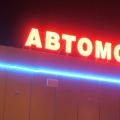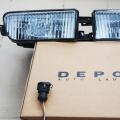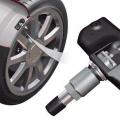Modern cars are equipped with different types of transmissions and it can be difficult for the consumer, especially when buying his first car, to make the right choice among this variety of transmissions.
Therefore, in this article we will try to understand how the automatic transmission differs from the robot, this is the question that worries many future car owners.
Automatic transmission. As you know, there are two main components in an automatic transmission - a torque converter and a gearbox. The torque converter provides smooth, smooth shifting, essentially replacing the clutch found on manual transmission cars.
The automatic gearbox consists of a certain set of gears, they are in mesh and form several stages: 4, 5, 6 and even 8.
Due to the design features, the automatic transmission, based on the engine speed and the oil pressure build-up, itself switches the steps (speeds), without the driver's intervention. Thanks to this gear change, electronics are used to a minimum.
Checkpoint robot what is it? Simply put, a control unit was installed on the manual transmission, which consists of a hydraulic drive and a servo drive (electronic unit). This block, without human intervention, is in charge of the clutch and gear shifting.

The principle of operation of the robot is the same as that of mechanics, only everything happens automatically - the hydraulics with electronic control will do everything by itself.
To better understand how an automatic transmission differs from a robotic one, let's look at their performance characteristics.
1. Automatic transmission has significantly reduced the load on the driver when driving, this is especially noticeable when driving in urban conditions. Modern automatic transmissions (adaptive) are even able to adapt to each driver, to his driving style. Also, the machine is characterized by soft and imperceptible gear shifting.
An automatic transmission has its drawbacks - it is an increased fuel consumption, especially in the city, and the repair of the machine, which sometimes happens, will result in a decent amount.
2. The robot belongs to mechanics, which means that maintenance and repair will be cheaper than that of a machine. The fuel consumption of a car with a robot box is equal to a manual transmission, and even lower in urban conditions, which is good news. Also, robots eat less butter than automatic machines.
Robots transmit torque from the motor to the wheels of the car without significant losses, which cannot be said about the machine. A big plus of the robotic box is that it supports manual gear shifting, which many automatic machines do not have.
The robot also has disadvantages - it is a slow gear change and jerks with jerks in the operation of the box, this happens quite often if the driver presses the gas pedal very hard. Also, in urban areas during parking, it is necessary to put the selector lever in the "neutral" position.
And why do this, you can find out in this video, which tells about the robot box.
Let's sum up the difference between an automaton and a robot:
- a robot is a manual transmission with a control unit, an automatic machine has its own design;
- when shifting gears, the machine outperforms the robot in terms of speed and smoothness of switching;
- the robot has manual switching, and many machines do not have this function;
- the robot box consumes less fuel and oil than the automatic machine;
- maintenance and repair of a robotic box is cheaper than an automatic box.
Conclusion. My opinion: a robot is a dark horse from which you can expect unpleasant surprises. I choose an automatic, it is studied and predictable in operation, especially since new automatic transmissions with a large set of gears are already approaching the mechanics in terms of fuel consumption, and also, these automatic machines can be adjusted for each driver.




